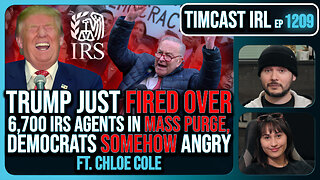Premium Only Content

The Fight for Life: A Doctor's Journey in Maternal Health, Part 1
"The Fight for Life" is a dramatized documentary from 1940 that follows the journey of Dr. O'Donnell, a young physician, through his training in obstetrics at the Maternity Center in Chicago, highlighting the challenges and triumphs of maternal healthcare in urban America during the Depression era.
Reel 1: The film opens with a tragic scene where Dr. O'Donnell witnesses a mother's death during childbirth, which profoundly impacts him, leading to his decision to specialize in obstetrics to prevent such tragedies.
Reel 2: Dr. O'Donnell's training at the Maternity Center is depicted, showing his hands-on learning experiences and the rigorous study of childbirth practices.
Reel 3: A significant portion is dedicated to an educational lecture to a class of doctors, focusing on home delivery procedures, underscoring the importance of proper medical training in obstetrics.
Reel 4: The narrative takes a practical turn as Dr. O'Donnell assists in the preparation for and actual delivery of a baby in a Chicago slum, emphasizing the harsh realities of healthcare in impoverished areas.
Reel 5: Here, the film addresses postnatal care and the broader socio-economic issues affecting maternal and infant health, with examples of poor living conditions that contribute to health risks.
Reel 6: A case of a woman who received no prenatal care is examined in the hospital, illustrating the dire consequences of inadequate healthcare access.
Reel 7: Dr. O'Donnell is shown instructing an intern during a delivery when the mother suffers a hemorrhage, highlighting the unexpected emergencies that can occur.
Reel 8: The film concludes on an optimistic note as the mother receives a life-saving blood transfusion, symbolizing the potential for medical intervention to save lives even in the most challenging situations.
This documentary not only educates on obstetric practices but also serves as a social critique, advocating for better healthcare, especially for underserved populations in urban settings.
-
 9:07
9:07
Silver Dragons
16 hours agoThis GOLD REVALUATION Will Change Everything
12.5K7 -
 9:16
9:16
MudandMunitions
17 hours agoGriffin Armament 3x Prism Optic Unboxing and First Impressions! The Ultimate Tactical Upgrade
6.11K -
 6:01
6:01
John Crump News
17 hours ago $0.29 earnedGOA vs. Philly: The Fight Starts!
6.51K1 -
 3:03:35
3:03:35
TimcastIRL
11 hours agoTrump Just FIRED OVER 6,700 IRS Agents In PURGE, Democrats SOMEHOW Angry w/Chloe Cole | Timcast IRL
193K272 -
 1:39:48
1:39:48
Kim Iversen
14 hours agoThe Measles Fear Hoax: How They’re Using an Outbreak to Smear RFK Jr.
110K89 -
 1:18:19
1:18:19
Glenn Greenwald
12 hours agoRumble & Truth Social Sue Brazil’s Chief Censor Moraes in US Court; DC Establishment Melts Down Over Trump's Ukraine Policy | SYSTEM UPDATE #409
133K142 -
 1:33:39
1:33:39
Redacted News
15 hours agoBREAKING! Europe goes NUCLEAR against Trump over pushing for PEACE in Ukraine | Redacted
201K277 -
 1:00:43
1:00:43
The StoneZONE with Roger Stone
11 hours agoRoger Stone Destroys Mike Pence for Attacks on Trump | The StoneZONE
135K56 -
 1:05:43
1:05:43
Flyover Conservatives
1 day agoFederal Reserve on the Chopping Block—Trump’s Boldest Move Yet! - Floyd Brown, Western Journal | FOC Show
75.4K7 -
 2:50:40
2:50:40
Melonie Mac
16 hours agoGo Boom Live Ep 38!
74.7K4